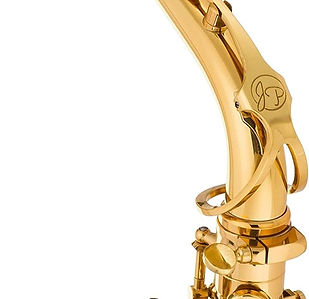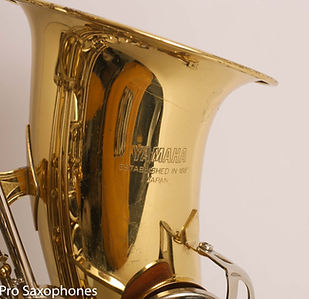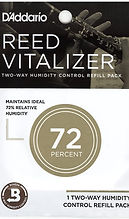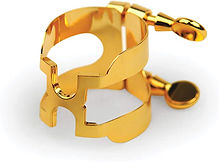What You Need to Get Started
on the Saxophone
What saxophone supplies do you need to buy as a beginner?
You will need the following saxophone supplies and equipment. While there is plenty of cool saxophone gear out there, we'll stick to the basics of what you need to start playing.
Checklists:
Essential Equipment
These supplies are needed in order to start playing the saxophone (click each for detailed recommendations):
-
Mouthpiece (plastic or hard rubber)
Get a walk-through of each of these supplies in our YouTube video below.
Disclaimer: Some links below are affiliate links, meaning we may earn a commission on those purchases. This will NEVER influence the recommendations that we give students but does help support the Play platform when purchased through this link.
Buying a Saxophone
Here are our recommendations on saxophones, primarily focused on alto and tenor saxophone options (learn more here on which saxophone (alto or tenor is best for beginners).
Buy New: Jean Paul Student Models (starts at $599)
Lower-cost new saxophone option
Jean Paul saxophones have earned a reputation for great value for the price. You can currently expect to pay $599 for an alto, which is much cheaper than a new saxophone from our other reputable brands listed below. These are solid beginner horns.
Buy Used: Yamaha 23 Student Model (starts around $850)
A great name brand saxophone at a lower price point
Consider a used Yamaha 23 from Get-a-Sax for $800-$850, or find a used model for sale near you for a similar price. If buying from another seller, make sure they will either allow you to play-test the instrument (if in-person) or have other guarantees to its condition or have a very clear refund policy, etc.
Renting a Saxophone
Many local music stores offer instrument rental. We recommend calling different music stores in your area to ask if they offer saxophone rentals and to get pricing information.
Cost:
Based on our research, you could expect to pay around $50/month for a saxophone rental.
Recommended Mouthpieces
While there are many, many mouthpieces on the market to try, let’s just start with the basics. Beginners should start on a plastic or hard rubber mouthpiece, not metal or any other material. (By the way, a hard rubber mouthpiece will look and feel very similar to plastic).
Although we recommend beginners start on alto or tenor saxophone, some students may have inherited a soprano or baritone, so we've included recommendations for that as well.

First Choice: The Mouthpiece that Came With Your Saxophone
If a mouthpiece came with your saxophone (and is made of a plastic-like material), then that is most likely good enough to start with and you won't have to spend any additional money.
Baritone Saxophone: Yamaha 5C Mouthpieces
If you're one of the few beginning on baritone saxophone, you would be more likely to find Yamaha's 5C model for Baritone instead of the 4C, and that will work.
Reeds
The reed recommendations below are tailored to pair well with the mouthpiece recommendations above (classical mouthpieces).
A note about reed sizing: Unfortunately there isn't a sure-fire way to know what reed size you should start on. I've provided some suggested starting points below, but ultimately you'll rely on how it feels to know if it's the right size. If it feels too easy and feels like you're "blowing the speakers out" or you're getting a lot of cracked notes, try sizing up. If it's really difficult to play or you feel like you have to bite or pinch to get a sound, then try sizing down. In addition, as you continue to play, you'll size up.
Cane Reeds - Vandoren Tradtional (Blue Box)
Cane reeds (a wood-like texture) are the traditional option for saxophone reeds. Sizing: As a general starting point, kids 10 and under could start on a 1.5, kids over 10 could try size 2.
Adult beginners can try 2 as a starting point. Many of my beginner students are ready to upgrade to a 2.5 after a couple of months, so really tune in to how it feels.
Plastic Reeds - Legere Signature
Plastic reeds may not have as warm of a sound as traditional cane reeds (in my opinion) but offer better handling in dry environments or outdoors, and offer a bit more durability. They are also lower maintenance than a cane reed. Sizing: If you already know what reed size works best for you in cane reeds, use this size conversion chart to find your Legere size. If this is your first reed or you're not sure what size to get, adult beginners should start on 2.25 and kids should start on a 2.
Humidity Control and Reed Storage (Optional, for use with our DIY reed storage kit)
When using cane reeds, you will need to pay attention to how they're stored in order to manage the effect that humidity has on their playability. I recommend purchasing one of these inexpensive reed vitalizer / humidity control packs and making your own DIY reed storage box as outlined here.
Ligature
You can keep it simple when it comes to a ligature. If your saxophone came with a ligature, that should work just fine. All the ligature needs to do for you right now is securely hold the reed to the mouthpiece. If you do need to upgrade, here's what I recommend:
Neck Strap
Our only rule on neck straps is that they do not stretch. With a stretchy neck strap (like those made of neoprene), the saxophone will move and “bounce” while playing, which may hold you back a bit in your playing.
Harness
A harness helps to take the weight off your neck and distribute evenly. Because the weight is being distributed differently, I have found that a padded harness isn't necessary, so you can save a few dollars by getting a more basic model.
Note: They make different versions for men and women, so be sure to select the option you want. They also make a kids size.
Build Your Own Maintenance Kit
Your saxophone may come with some of these items, but probably not all of them. Maintenance and cleaning is highly important and cost-saving, and will primarily keep your key pads in good condition (the leather or leather-like circular pad under each key). These can be expensive to replace and can cause a lot of frustration, so keep them clean!
This kit will cost about $40-$80 to build depending on what you already have.
Required: Cleaning Swab
This is a poofy piece of cleaning cloth attached to a weighted ribbon. Lesson 4 of our Saxophone Fundamentals Class shows you how to use this.
Required: End Cap (if not included with your saxophone)
This is included with almost all saxophones, but if not, you'll need to buy one. It protects the octave key post when your saxophone is in the case (place the end cap in the end of the saxophone before you put it away).
At this time, the Key Leaves Gap Cap is our recommended product, as this will have the most universal and safe fit (and vents air for better key pad health).
















